2023 February 6
Mars Opposition Blog 6 February 2023
Today we are summarising the January observations. The disk now shows a notable phase, and is shrinking fast. Nonetheless I personally have continued to enjoy some fine visual views, especially in twilight, and have been able to make over 90 drawings so far this apparition. And we have now received data from 101 contributors, which is very satisfactory for a December opposition such as the present one. It is pity, though, to witness the slow decline in the number of visual observers.
I have received a global map made by Geof Lewis (Norfolk). It is a very nice piece of work, and the first 2022 opposition map I have seen. At his BAA member page Geof has produced another copy with names. The N. polar clouds shown on the map were imaged only upon specific dates, but their inclusion gives a graphic reminder of the sort of features that could often be observed in the north in 2022. I am posting a south up version here.
The greatly foreshortened north polar cap is still not completely free from hood, but it shows a dark border. There have been some patches of hood around the morning terminator, particularly in the longitudes around and immediately following Mare Acidalium, where a strip of white cloud – parallel to the cap – often extended from the noon or afternoon Acidalium to the terminator. The latter is shown very well upon the map.
In the south, there have been various isolated thin clouds, and a specific and very bright cloud has recently collected in the Argyre basin, persisting throughout the martian day. There have been a number of other discrete bright morning clouds at the same latitude, in Hellas and Noachis. Hellas is again very bright in the early afternoon. On Jan 29 I observed over several hours to watch bright white clouds rotate with the basin until it reached the evening limb. But a continuous south polar hood has not been seen.
An increase in equatorial cloud has been noticeable. We have a persistent bright area on the evening side, which must be part of the seasonal Equatorial Cloud Band (ECB) enhanced by the greater optical depth at the limb. Later this will thicken and extend across the disk when seen in blue light. Historical data show that it begins around Ls 0 degrees, but is rarely continuous before around Ls 45 degrees. (On Feb 10, Ls reaches 22 degrees.) At the same time, we are seeing morning terminator clouds to much better effect. Of these, the aforementioned cloud following Mare Acidalium has been prominent. We have seen evening orographic clouds over some volcanoes.
In the absence of specific dust events, the albedo features do not show much intrinsic change. However, I have noticed that the dark area on the north following side of the Syrtis Major, which developed greatly at the time of the 2018 global dust storm, and which was less prominent during 2020, has been further fading, thereby narrowing the N. part of this feature. From being blunt-ended, it is now more tapering. See the Jan 8 image by Gary Walker.
I am posting a number of current images, along with some earlier ones from 2022 Oct-Dec for comparison. Thus Paul Maxson’s image of Oct 30 shows Hellas filled with yellow dust fallout. A month later Damian Peach’s high resolution image shows how faint the surroundings of Elysium have become, and also an opposition brightening of Elysium Mons and Hecates Tholus. Ella Bryant’s image of Nov 19 reminds us of the persistent partial transparency of the north polar hood in the N. of Mare Acidalium. It is very instructive to make monthly comparisons at the same (or nearly the same) CM longitude.
It is important to keep observing, to continue to record the seasonal changes in the white cloud activity, in particular. We normally follow the planet up to a few weeks before solar conjunction…… which will not be due until November 18!
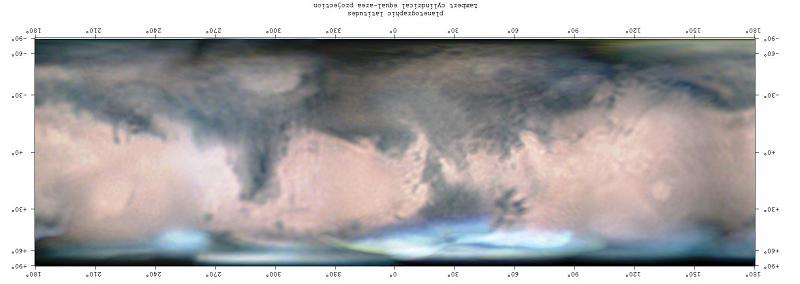

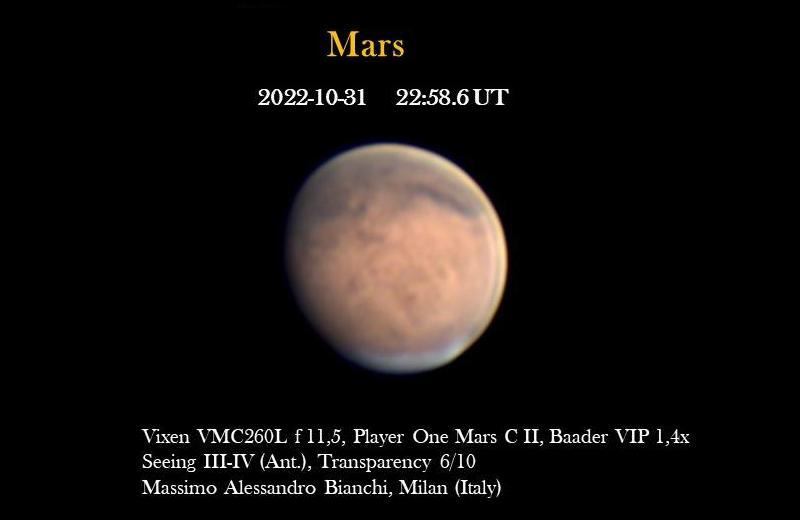
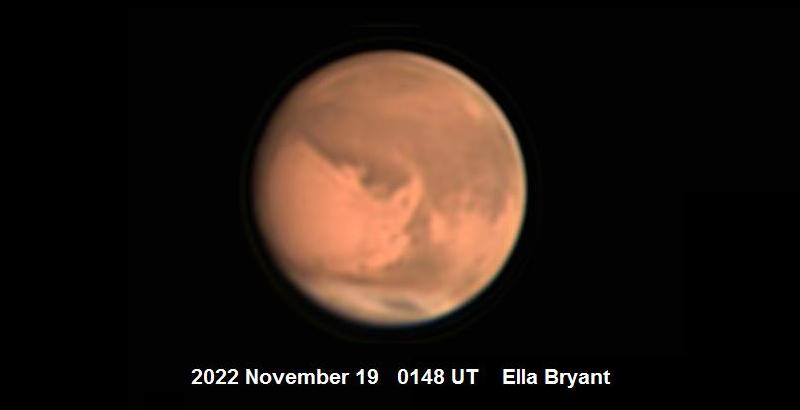

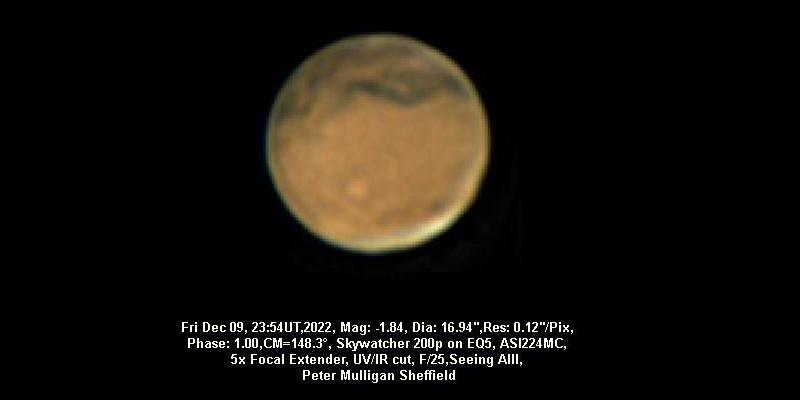
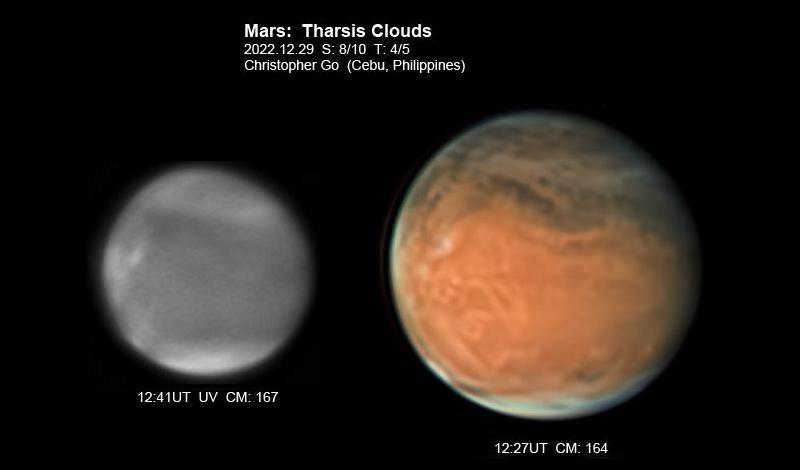
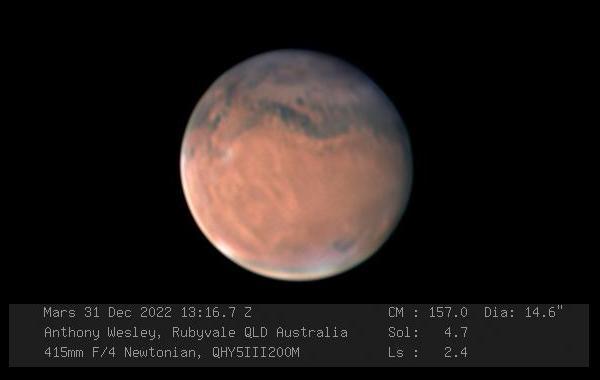
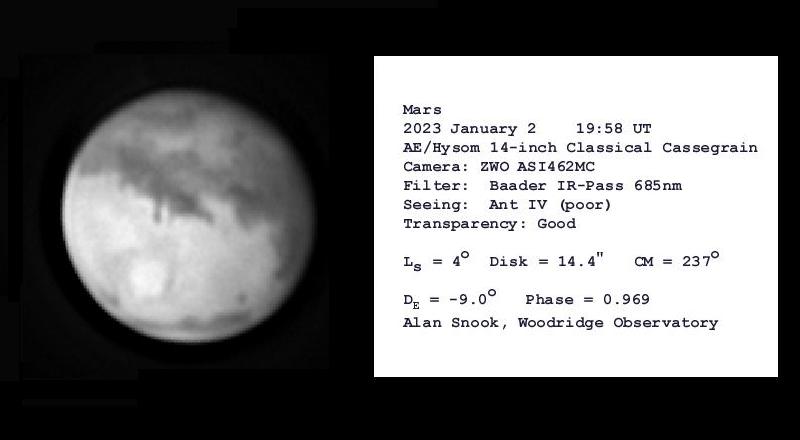
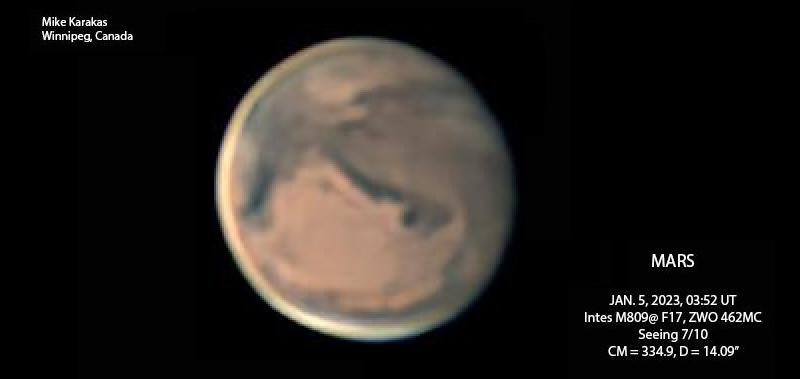

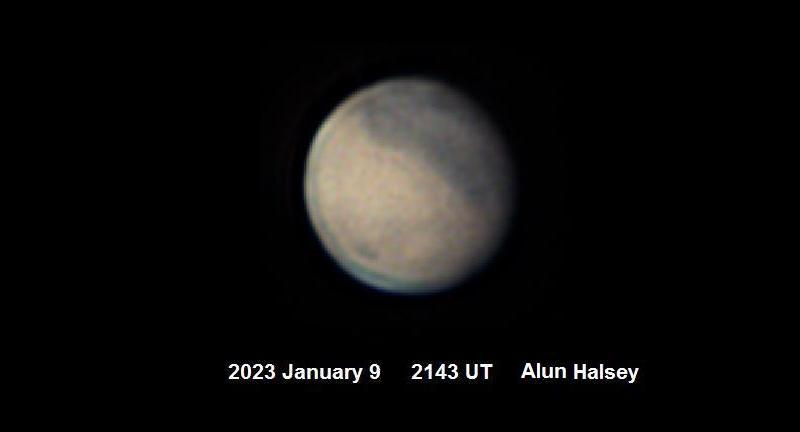
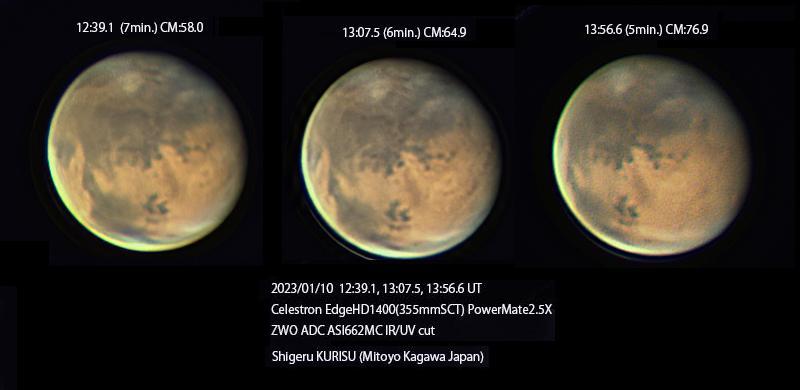
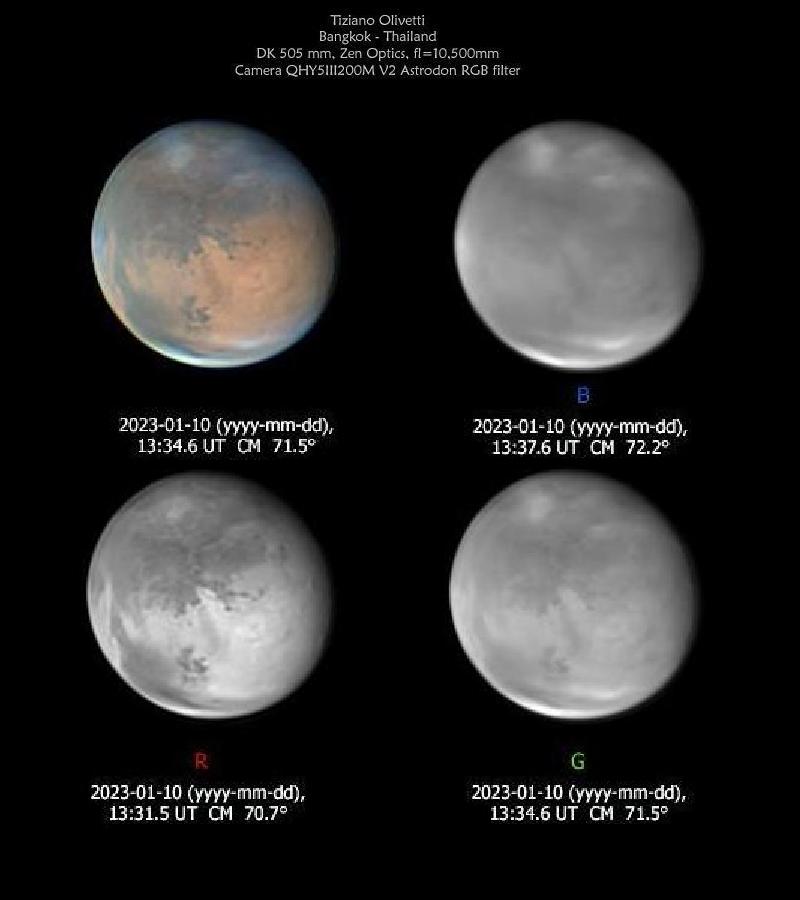
Teaser image: Mars Map 2022 by G D Lewis
https://britastro.org/wp-content/uploads/2023/02/2022-10-30-P.W.Maxson.tif
| The British Astronomical Association supports amateur astronomers around the UK and the rest of the world. Find out more about the BAA or join us. |
